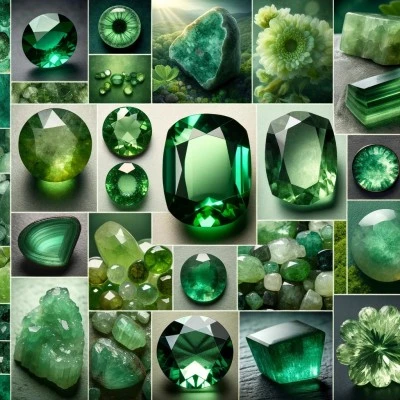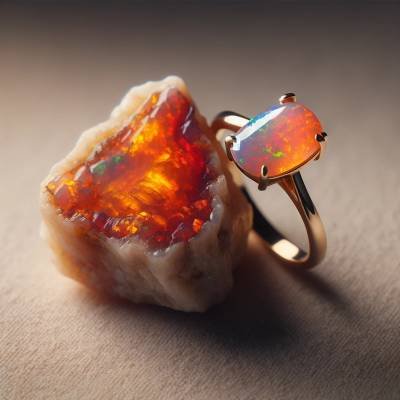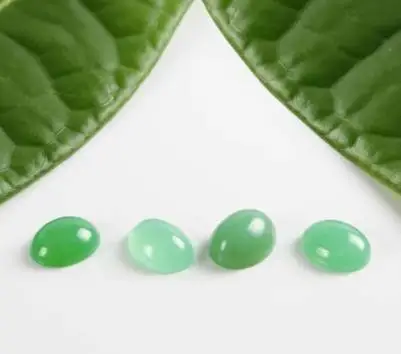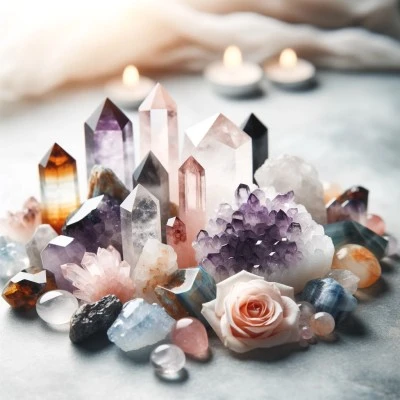From Emeralds to Peridots and Beyond: Discovering What a Green Gemstone Is Called
Emeralds, with their captivating verdant hue, have long been treasured in various cultures around the world. These gemstones, often associated with vitality and renewal, are renowned for their rich green color. Formed under specific geological conditions, emeralds are not only a symbol of luxury but also carry fascinating historical and cultural significance. Their allure is enhanced by the unique inclusions and imperfections, known as jardin, which add to their distinct character.
I. Introduction to Green Gemstones
A. Overview of Green Gemstones
Green gemstones, with their vibrant shades ranging from pale mint to deep forest green, have captivated humanity for millennia. These gems, encompassing a variety of minerals, are prized for their beauty and rarity. Among them, emeralds are particularly esteemed, but other green stones like peridot, jade, and tsavorite also hold significant places in the world of gemology.
B. Historical Significance of Green Gemstones
Historically, green gemstones have been symbols of power, wealth, and beauty. In ancient Egypt, emeralds were revered as symbols of eternal life. The Romans, too, were fascinated by these stones, associating them with Venus, the goddess of love and beauty. Throughout history, these gems have adorned the crowns of royalty and been featured in the most luxurious of jewelry.
C. Cultural Importance Across Different Civilizations
Green gemstones have held different meanings in various cultures. In Asian civilizations, jade is a symbol of purity and moral integrity, often used in religious and ceremonial artifacts. In Western traditions, emeralds and other green gems are believed to bring good fortune and health. This cultural diversity highlights the universal appeal and significance of these remarkable stones.
II. The Emerald: A Premier Green Gemstone
A. Geological Formation of Emeralds
Emeralds are formed under unique geological conditions, requiring specific elements like beryllium. They often form in areas with rich mineral diversity, where tectonic activity and hydrothermal processes lead to the growth of these precious crystals.
B. Characteristics and Features
Emeralds are known for their striking green color, which can range from bluish-green to a deep, pure green. This color is due to trace amounts of chromium and sometimes vanadium. Inclusions, known as ‘jardin’, are common in emeralds, making each stone distinct. These inclusions are not necessarily seen as flaws but can enhance the stone’s character.
C. The Unique Appeal of Emeralds
Emeralds’ appeal lies not just in their color but in their rarity and historical significance. Their way of interacting with light, showing a rich spectrum within their green depths, adds to their allure. Moreover, high-quality emeralds are rarer than diamonds, adding to their exclusivity and desirability.
D. Major Sources and Mining Regions
Emeralds are mined in several places around the world, with Colombia being the most famous source. The Colombian mines are known for producing emeralds with a particularly vibrant and desirable green hue. Other significant sources include Brazil, Zambia, and Zimbabwe, each offering emeralds with unique qualities and color profiles.
III. Other Notable Green Gemstones
A. Peridot: The Evening Emerald
Peridot, often called the ‘evening emerald’, is another beautiful green gemstone. Its formation is linked to volcanic activity, and its color ranges from yellowish-green to a rich olive. Peridot has a unique, glassy luster and is often lighter and more translucent than emerald.
B. Jade: Symbol of Purity and Serenity
Jade, revered in Asian cultures, is known for its smooth, even texture and rich, creamy green color. It’s a symbol of purity, wisdom, and serenity and has been used in everything from jewelry to ceremonial objects. Jade comes in two types: nephrite and jadeite, with jadeite being the more precious.
C. Tsavorite and Demantoid Garnets: Rare and Radiant
Tsavorite and demantoid garnets are lesser-known but highly prized for their bright, vivid green colors. Tsavorite, discovered in Tanzania, ranges from light to deep green, while demantoid, with its distinct brilliance and fire, can display a rare green hue that is highly valued.
D. Comparison with Emeralds
While emeralds are the most famous green gemstones, these other stones offer diversity in color, rarity, and price. Peridot, jade, and garnets provide alternatives for those seeking green gems, each with its unique appeal and characteristics.
IV. The Role of Green Gemstones in Jewelry and Fashion
A. Historical Use in Jewelry
Green gemstones have been used in jewelry for thousands of years. The ancient Egyptians, Greeks, and Romans valued these stones for their beauty and rarity. In medieval Europe, emeralds were often set in gold and worn by royalty and the clergy as symbols of status.
B. Modern Trends and Designs
In modern times, green gemstones continue to be a popular choice in jewelry. Their vibrant color makes them a favorite in both classic and contemporary designs. They are often set in rings, necklaces, and earrings, sometimes accompanied by diamonds or other precious stones to enhance their beauty.
C. Care and Maintenance of Green Gemstones
Caring for green gemstones requires some attention, as many of these gems are softer and more prone to scratching. It is recommended that they be regularly cleaned with mild soap and water and that they be stored separately to avoid contact with harder stones. Professional cleaning and inspection can also help maintain their brilliance and ensure their settings are secure.
V. The Symbolism and Beliefs Associated with Green Gemstones
A. Emeralds and Their Symbolic Meanings
Emeralds have long been associated with fertility, rebirth, and love. In ancient Rome, emeralds were said to relax the eyes and relieve eye strain when gazed upon. They are also believed to symbolize wisdom and enhance the wearer’s intuition.
B. Spiritual and Healing Properties
Many cultures attribute healing properties to green gemstones. They are often thought to aid in physical and emotional healing, promoting balance and harmony. Emeralds, in particular, are said to help in alleviating stress and enhancing mental clarity.
C. Green Gemstones in Astrology and Birthstones
In astrology, green gemstones are linked with certain zodiac signs like Taurus and Cancer. Emerald is the birthstone for May, representing growth and renewal. Peridot, as the birthstone for August, is believed to bring power and influence to its wearer.
VI. FAQs
Q: What is the most famous green gemstone?
A: The emerald is the most renowned green gemstone, known for its deep green hue and historical significance.
Q: Are there any green gemstones besides emeralds?
A: Yes, several other green gemstones exist, such as peridot, jade, tsavorite, and demantoid garnets, each with unique characteristics and shades of green.
Q: How are emeralds formed?
A: Emeralds are formed under specific geological conditions, often in areas with rich mineral diversity, through processes involving tectonic activity and hydrothermal fluids.
Q: Can green gemstones have different meanings in various cultures?
A: Yes, green gemstones like emeralds and jade hold different cultural significances, ranging from symbols of purity and moral integrity in Asian cultures to representations of fertility and love in Western traditions.
Q: What factors should be considered when buying a green gemstone?
A: When purchasing a green gemstone, consider its color, clarity, cut, and carat weight, as well as the presence of any treatments or enhancements.
Q: How should green gemstones be cared for?
A: Green gemstones should be cleaned with mild soap and water and stored separately to avoid scratches. Regular professional cleaning and inspection are also recommended.
Q: Are green gemstones used in astrology or as birthstones?
A: Yes, certain green gemstones, like emeralds, are associated with specific zodiac signs and months. Emerald is the birthstone for May, and peridot is the birthstone for August.
VII. Conclusion
A. The Enduring Allure of Green Gemstones
The allure of green gemstones endures due to their stunning beauty, rarity, and the rich history and symbolism attached to them. From the regal emerald to the vibrant peridot, these gems continue to captivate and enchant people worldwide.
B. Future Trends and Sustainability Concerns
As the demand for green gemstones grows, sustainability concerns become increasingly important. Ethical sourcing and environmentally friendly mining practices are crucial for preserving these treasures for future generations.
C. The Personal and Cultural Significance of Green Gemstones
Green gemstones hold a special place in many cultures and individuals’ hearts, symbolizing everything from love and fertility to purity and wisdom. Their personal and cultural significance, combined with their natural beauty, makes them timeless treasures.
VIII. Suggested Readings
These books provide valuable insights and information for both gem enthusiasts and professionals, offering a deeper understanding and appreciation of the fascinating world of gemstones, including the enchanting green varieties:
- “Gemstones of the World” by Walter Schumann – A comprehensive guide covering various gemstones, including green gemstones, with detailed descriptions and photographs.
- “Color Encyclopedia of Gemstones” by Joel Arem – An in-depth reference for identifying and appreciating gemstones, focusing on color as a key characteristic.
- “Gems, Crystals, and Minerals: A Comprehensive Guide” by Anna S. Sofianides and George E. Harlow – A detailed book exploring the history, lore, and properties of gems, crystals, and minerals.
- “The Passion of Colored Gemstones” – A colorful book covering quality factors, geographical sources, and treatment information of popular colored stones, including green gemstones.
- “Gem and Ornamental Materials of Organic Origin” by Maggie Campbell Pedersen – A unique exploration of gemstones and materials derived from organic sources, offering a different perspective on gemology.
Whether you are a collector, a jewelry lover, or simply curious about gemstones, these readings will enrich your knowledge and fascination with these natural wonders.







